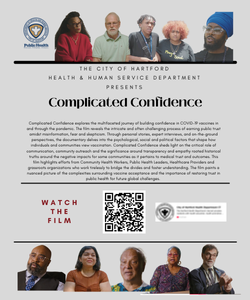By Aja Y. Martinez & Robert O. Smith, YES Magazine
What is Critical Race Theory? This resounding question is asked by U.S. senators at Supreme Court justice confirmation hearings, concerned parents at local school board meetings, and liberal and conservative media pundits alike. Good- and bad-faith video bloggers and podcasters, presidential debate moderators, lay people and pastors just want to know why this term is constantly in the news and coming out of politicians’ mouths.
Founders like Kimberlé Crenshaw, Neil Gotanda, Stephanie Phillips, and Teri Miller also grappled with this question as they kicked around terms and concepts in 1989 discussing what exactly unified their nascent group. What is CRT?
When Derrick Bell was asked to define CRT, he had a few things to say:
Definition 1: Critical race theory . . . is a new approach to legal theory pioneered by minority scholars. Practitioners, often through the device of either true stories or personal anecdotes or fictional tales, discuss the many ways in which race and law affect each other.
Definition 2: Practitioners, often through storytelling and a more subjective, personal voice, examine the ways in which the law has been shaped by and shapes issues of race.
Definition 3: I rather think that this writing is the response to a need for expressing views that cannot be communicated effectively through existing techniques. In my case, I prefer using stories as a means of communicating views to those who hold very different views on the emotionally charged subject of race.
Woven throughout Bell’s discussions of CRT is his insistence on centering the experiences and unique voices of people of color and communicating these experiences through the method of story. He emphasized “story” to his fellow race-crits.
We are living in a momentous time. As the global order slips toward authoritarianism, racial retrenchment is on the rise. Global economic shifts and growing wealth disparities are combining with the climate crisis to create renewed conditions for the exploitation of labor and the unjust distribution of resources. Laws and policies are being altered, modified, and reinterpreted to benefit those classes long invested in building a world that suits their interests. The faces at the bottom of the well, those communities consigned to poverty and degradation, are at ever greater risk of racialized dehumanization and violence.
It is no mistake that CRT—one of the most incisive and forward-thinking tools for critical inquiry and societal interpretation developed in the United States—is now coming under attack. As Bell observed in 1995, “At a time of crisis, critics serve as reminders that we are being heard, if not always appreciated.”
The power of CRT is in stories—stories that humanize data, that communicate truths. Although CRT has recently again come under attack, even those of us committed to its tenets and frameworks should not forget that the call is not primarily to defend CRT. Good tools are worth defending because of the good they can do for the sake of the world. When it comes to the storytelling heart of CRT, the point is to effectively humanize data to promote justice, to promote the flourishing of human communities.
Bell said that the perspectives communicated through CRT “are shaped by having lived our whole lives thinking about and experiencing issues of race—perspectives that, until now, have been ignored by the legal establishment.” That establishment is an extension of society as a whole. Storytelling—as a critical method—has the power to make those perspectives heard so dominant classes can no longer avoid the responsibility of listening.
We see the power of storytelling as method in Patricia Williams’ longstanding cultivation of her narrative voice while providing critical legal commentary in The Nation. We see it in the work of Kimberlé Crenshaw and the African American Policy Forum in her recent book, #SayHerName: Black Women’s Stories of Police Violence and Public Silence. We see it in the continued work of Mari Matsuda and Charles Lawrence, producing art exhibits that recover the parallel life stories of women who have fought for Hawaiian sovereignty and reparations.
We see it in the ongoing critical writing of Richard Delgado and Jean Stefancic, still producing cutting-edge work challenging the boundaries of CRT itself while generously mentoring the next generation of scholar-activists. We see it in the work of Janet Dewart Bell, who since Derrick Bell’s death in 2011 has been the primary torchbearer of his legacy while producing her own projects celebrating the voice and witness of African American women.
Stories, by their very nature, are more accessible than more traditional academic modes of writing. They also more effectively communicate, as Bell said, with “those who hold very different views on the emotionally charged subject of race.” Stories demonstrate the power of CRT because they illuminate the power of human connection and empathetic concern at the heart of CRT.
This excerpt, adapted from The Origins of Critical Race Theory: The People and Ideas That Created a Movement by Aja Y. Martinez and Robert O. Smith (NYU Press, 2025), appears by permission of the publisher.
This editorial was originally published in Yes Magazine.
Photo by Nicola Barts: https://www.pexels.com/photo/close-up-of-man-holding-coins-in-hand-7927424/





